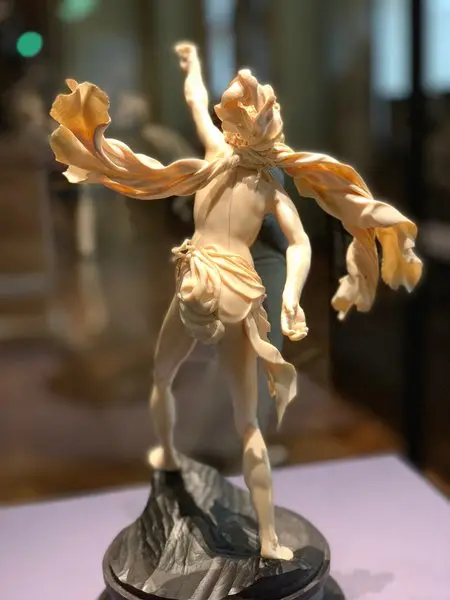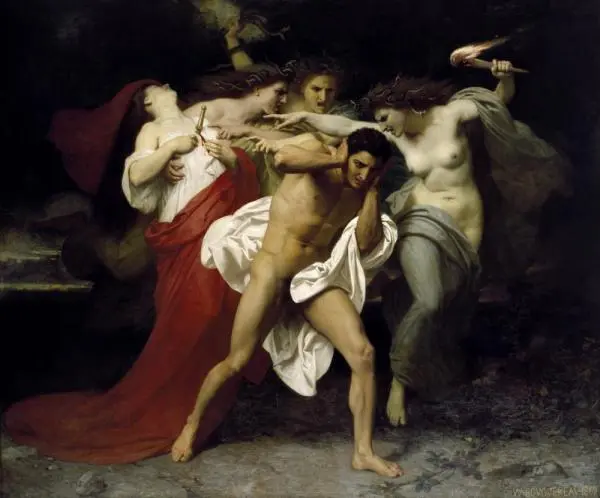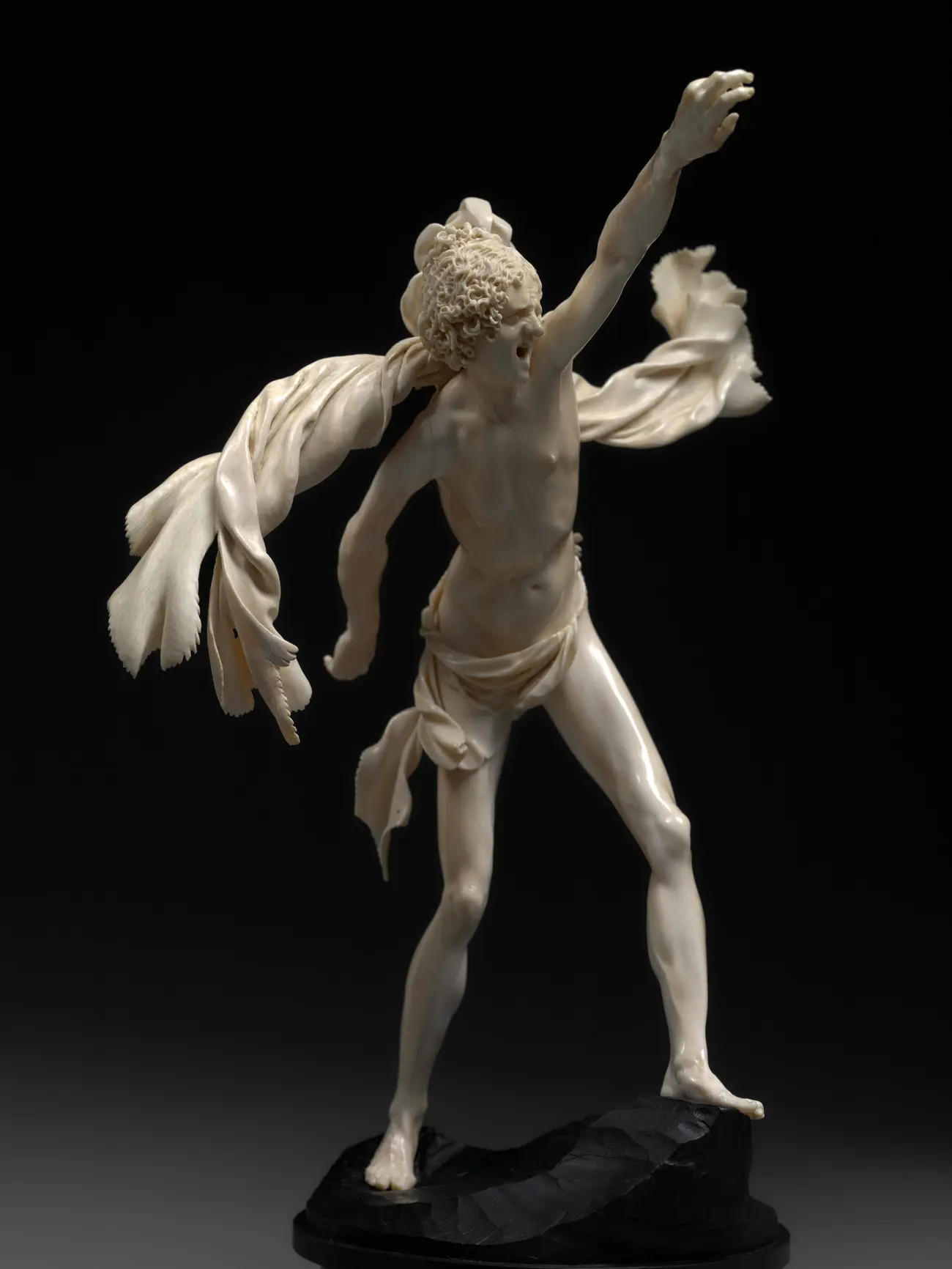Furor
Der Elfenbeinschnitzer erhielt seinen Notnamen nach dieser Statuette, die mit ihrer außerordentlichen Expressivität und Dynamik sowie der virtuosen Oberflächengestaltung alle Charakteristika seines eigenwilligen Stils aufweist. In der barocken Elfenbeinkunst ist das Werk des Furienmeisters einzigartig. Er war wohl für den Fürsterzbischof von Salzburg tätig, doch ist über sein Leben nichts bekannt.
Title:
Fury
Artist:
Furienmeister (tätig in Salzburg (?) 1. Viertel 17. Jahrhundert)
Time:
ca. 1610/20
Lunging vigorously forward on his long legs, an emaciated figure strides before the viewer.
Everything is in a state of agitation : limbs look as light as a feather, the loincloth as though it has a life of its own, drapes and hair, frenzied facial expressions, all is driven by a force seemingly uncontrollable.
The Roman furies, or as they were known in earlier Greek mythology, Erinyes, were gods of vengeance. They would attach themselves to malefactors’ heels and were regarded as the personification of a bad conscious.
Later the fury came to embody rage, malevolence, and envy—the source of evil. Representations combined extremes of earthly transience and physical decline.
In eighteenth-century literature and theatre the contrast of “fury” and “law” was frequently employed. The fury—in tandem with her counterpart, grace—represented opposition to order and reason: fickle, agitated, fanatical, and unpredictable.
Interestingly, no other representation of a fury in western sculpture is known. However, furies were portrayed in painting and the graphic arts. These are often similar to depictions of wrath.
One example from the 19th century however shows that ugliness and old age were not essential characteristics.
The artist created this impressive sculpture for an elite public. His name has remained unknown until the present; however he probably lived and worked in the Salzburg region.
Some 25 works, all in ivory, are attributed to the “Master of the Furies”.


Orestes Pursued by the Furies
1862
Chrysler Collection, Norfolk
More from the series #The Face of Europe
Explore Kunstgeschichten
Discover varied essays on a wide range of artworks from our extensive collection.

